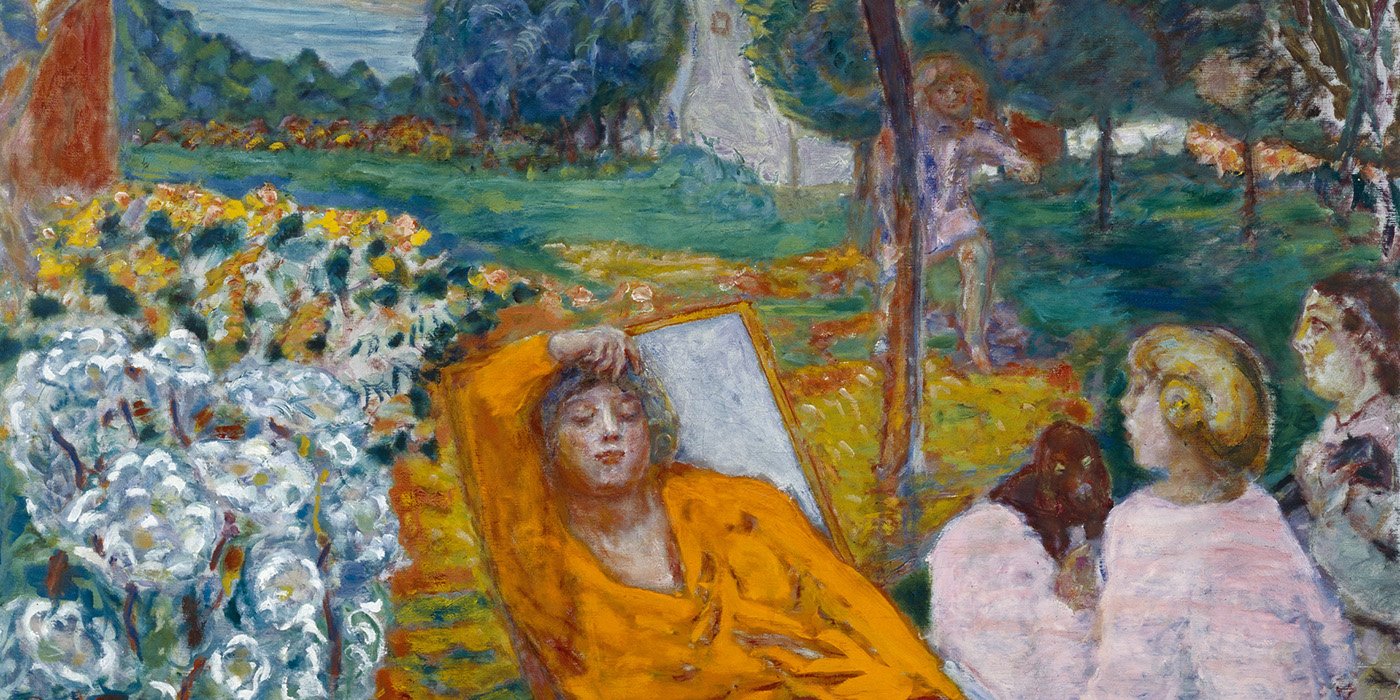VIVRE NOTRE TEMPS! BONNARD, VALLOTTON AND THE NABIS
Founded in 1888, the Nabis group, around Pierre Bonnard Maurice Denis, Félix Vallotton and Édouard Vuillard, is emblematic of the disintegration of Impressionism and the beginnings of modern art. The farewell exhibition of the Hahnloser-Jaeggli Collection at Kunstmuseum Bern presents its most prominent works by painters belonging to this audacious movement.
The name of the group comes from nebiim which stands for “prophet” or “initiated” in Hebrew, corresponding to the function assigned to these artists by Paul Gauguin.
His eleven zincographies of scenes from Brittany, Martinique, and Pont-Aven exhibited at Café Volpini in 1889, assisted Denis in formulating his famous proposition: “It is well to remember that a painting, before it is a battle horse, a naked woman, or some anecdote or other, is essentially a flat surface spread with colors put there in a certain order”. Although there was no unified style and the significance and exploitation of the tension between surface and subject matter varies for each member of the group, it is intriguing to recognize their double origins, in Gauguin and, more subtly, Odilon Redon.
Gauguin and Redon probably met in 1886 when they both took part in the eighth and last Impressionist exhibition. The inclusion of them was symptomatic of the crisis and break up of Impressionism. Gauguin denounced the Impressionist’s “parasitism” upon the object and praised Redon for the way he sustained “ambiguity”. In a letter to Emile Schuffenecker from Pont-Aven in 1888 he wrote: “A word of advice: don’t paint too much from life. Art is in an abstraction: remove it from nature by meditating on her; give your attention to the creation that will result from it”. The Nabis can be precisely situated in such a collision between old forms of representation and the notions regarding a new artistic idiom that was just being born.
The exhibition “Vivre notre temps!” Bonnard, Vallotton, and the Nabis demonstrates how artists still working with the medium of representation were slowly turning towards abstraction. Their curious and experimental attitude towards tradition is expressed by the title of the exhibition which originates in Hedy Hahnloser’s note from 1940 where she stated that a generation’s significance and objectives could be better understood only through an exchange with artistic and creative contemporaries. She was convinced that such an understanding was necessary in making a mark in their own times.
Torn between the old and the new, between visible and invisible, between mimesis and experimentation, and inspired by Gauguin and Redon, the ideas of the Nabis – the prophets – helped to pave the way for the early 20th century development of abstract and non-representational art.
Curator : Marta Dziewańska
Curatorial assistance : Livia Wermuth

